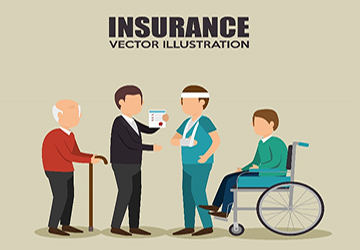Insurance, it's one of those necessities in life that you can't avoid. Insurance provides essential financial protection when unexpected events occur, whether auto, home, life, or health coverage. However, navigating the maze of options from countless providers can be downright dizzying.
How do you determine what coverage and limits you need? How much is too much to pay in premiums? Here are some tips to help you master the art of choosing insurance that provides the right coverage at the right price.
Understanding the Different Types of Insurance
You must first understand the major types available to choose the right insurance for your needs.
Auto Insurance
Covers damage to your vehicle from accidents, theft, or natural disasters. Liability insurance helps protect you financially if you're found at fault in an accident. Comprehensive and collision coverage helps pay for repairs to your vehicle. Consider the value of your car and how much risk you're willing to take on.
Homeowners Insurance
It protects your home and belongings from fire, theft, or storm damage. It typically includes coverage for the structure of your home and your personal property. Think about the replacement cost of your home and how much coverage you need for your belongings.

Life Insurance
Life insurance provides financial protection for your loved ones if you pass away. Term life insurance covers you for a specific period, while whole life insurance also builds cash value. Consider how much coverage you need based on dependents and debts.
Health Insurance
It helps cover medical costs like hospital stays, doctor visits, prescriptions, etc. Plans vary in terms of premiums, deductibles, and coverage. Think about your overall health, access to doctors, and budget.
Disability Insurance
Replaces part of your income if you become ill or injured and can't work. Short-term coverage helps for a few months, while long-term coverage can last years. Consider how much of your income you need to protect based on your financial obligations.
Choosing the right insurance comes down to understanding your needs, risks, and budget. Do your research, compare quotes, and be bold and ask questions. The coverage that gives you peace of mind is worth the effort.
Finding the Right Insurance for Your Needs
Finding the right insurance means evaluating what matters to your lifestyle and budget. To get started:
Identify Your Must-Haves
Homeowner's or renter's insurance to protect your assets? Health insurance for peace of mind? Auto insurance if you drive? These are usually must-haves. Determine how much coverage you need based on the value of what you're insuring.
Consider Your Nice-to-Haves
Life insurance, disability, or long-term care insurance may be friendly to have, depending on your situation. Think about how much financial risk you can take on and how much you can afford.
Set Policy Limits
Must-have policies should aim for replacement cost coverage. For homes, get a policy that covers rebuilding your home. For health, get a policy with an out-of-pocket maximum you can afford if the worst happens. For auto, get a policy that covers other vehicles in an accident.
Shop and Compare
Compare quotes from different companies. Look at premiums, coverage, deductibles, customer satisfaction, and financial stability. Buy from a reputable company with a solid financial rating.
Review and Renew
Once you purchase policies, review them annually to ensure you have the right coverage. Make changes when life circumstances change, like buying a home, having kids, or retiring.
With some thought about what matters to you, determining how much risk you can take on, and finding reputable companies with solid coverage and competitive rates, you'll be on your way to finding insurance policies that give you the protection and peace of mind you need.

Top 5 Common Mistakes to Avoid When Choosing Insurance
Choosing the right insurance for your needs can be tricky. Avoid these common mistakes to ensure you end up with coverage that covers you when needed.
1.Not Reading the Fine Print
Insurance policies are legal contracts—ensure you understand precisely what is and isn't covered before signing on the dotted line. Key things to look for include coverage limits, deductibles, and exclusions. If the language is confusing, ask an insurance agent to explain.
2.Going for the Cheapest Premiums
While lower premiums may seem appealing, the cheapest policy isn’t always the best. Make sure any policy you consider meets your minimum coverage needs. More affordable policies often have higher deductibles, exclusions, and less coverage.
3.Purchasing Overlapping Coverage
Don’t pay for the same coverage twice. For example, if you have good health insurance, you may not need additional accident or critical illness coverage. Review what range you already have before purchasing new policies.
4.Not Bundling When You Can
If you need home and auto coverage, consider bundling them together for a discount. Bundling multiple policies together, like home, auto, and life, can save you up to 20% or more.
5.Forgetting Optional Coverage
Consider optional add-ons like roadside assistance, rental car reimbursement, and identity theft protection based on your needs. They provide extra coverage at a lower cost when bundled with a policy.
Reviewing your options and avoiding these common mistakes will help you choose insurance wisely. Do your homework, understand what you’re buying, and you’ll have the right coverage at the right price.
Conclusion
As you've seen, choosing the right insurance for your needs requires diligence and patience. Take your time with the first policy or the cheapest option. Do your research, understand your risks and priorities, and find a policy suited to your unique situation. Once you've found the right coverage at a price you can afford, you'll have the peace of mind that the essential things in your life, like your home, health, and vehicle, are protected should the unexpected arise. The security and stability of the right coverage are worth the effort. You've got this! Now, get insured.


